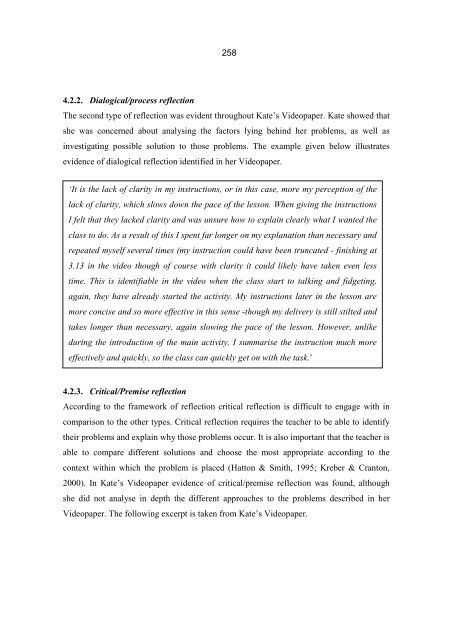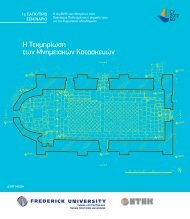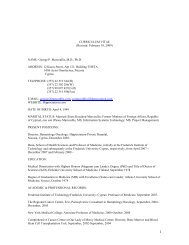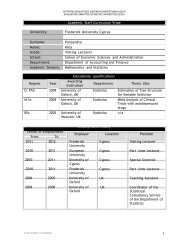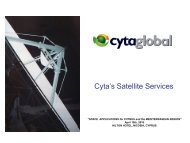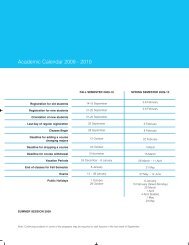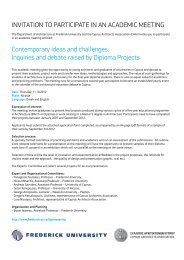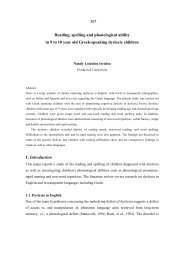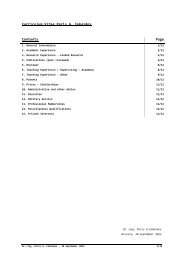Videopaper and teacher education Student teachers create ...
Videopaper and teacher education Student teachers create ...
Videopaper and teacher education Student teachers create ...
Create successful ePaper yourself
Turn your PDF publications into a flip-book with our unique Google optimized e-Paper software.
4.2.2. Dialogical/process reflection<br />
258<br />
The second type of reflection was evident throughout Kate’s <strong>Videopaper</strong>. Kate showed that<br />
she was concerned about analysing the factors lying behind her problems, as well as<br />
investigating possible solution to those problems. The example given below illustrates<br />
evidence of dialogical reflection identified in her <strong>Videopaper</strong>.<br />
‘It is the lack of clarity in my instructions, or in this case, more my perception of the<br />
lack of clarity, which slows down the pace of the lesson. When giving the instructions<br />
I felt that they lacked clarity <strong>and</strong> was unsure how to explain clearly what I wanted the<br />
class to do. As a result of this I spent far longer on my explanation than necessary <strong>and</strong><br />
repeated myself several times (my instruction could have been truncated - finishing at<br />
3.13 in the video though of course with clarity it could likely have taken even less<br />
time. This is identifiable in the video when the class start to talking <strong>and</strong> fidgeting,<br />
again, they have already started the activity. My instructions later in the lesson are<br />
more concise <strong>and</strong> so more effective in this sense -though my delivery is still stilted <strong>and</strong><br />
takes longer than necessary, again slowing the pace of the lesson. However, unlike<br />
during the introduction of the main activity, I summarise the instruction much more<br />
effectively <strong>and</strong> quickly, so the class can quickly get on with the task.’<br />
4.2.3. Critical/Premise reflection<br />
According to the framework of reflection critical reflection is difficult to engage with in<br />
comparison to the other types. Critical reflection requires the <strong>teacher</strong> to be able to identify<br />
their problems <strong>and</strong> explain why those problems occur. It is also important that the <strong>teacher</strong> is<br />
able to compare different solutions <strong>and</strong> choose the most appropriate according to the<br />
context within which the problem is placed (Hatton & Smith, 1995; Kreber & Cranton,<br />
2000). In Kate’s <strong>Videopaper</strong> evidence of critical/premise reflection was found, although<br />
she did not analyse in depth the different approaches to the problems described in her<br />
<strong>Videopaper</strong>. The following excerpt is taken from Kate’s <strong>Videopaper</strong>.


